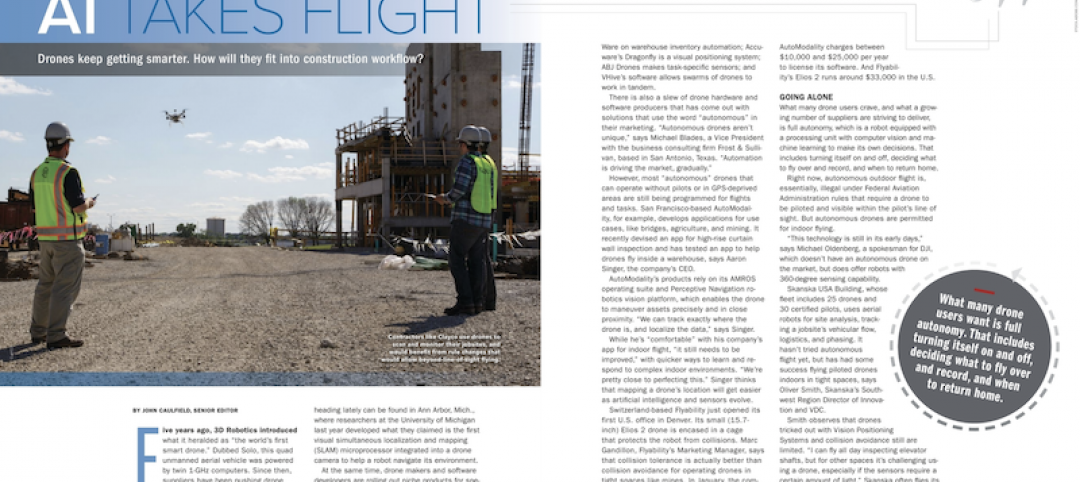This is the second article in a three-part series on digital transformation. Click here to read part one: What's driving the surge of digital transformation in AEC today?
In today's ever-evolving landscape, digital transformation has become a major force, reshaping the way many industries operate. And the AEC sector is no exception. While going digital might seem like a playground solely for industry giants, the truth is that any company can benefit from the power of technology.
The key is to identify critical processes as a primary focus, set clear objectives, choose optimal tools, and expand only after achieving success in these areas.
Common Use Cases of Digital Transformation in AEC
In this article, we’ll take a look at common use cases of digitalization in the field and highlight the benefits it brings. Through real-world success stories of Fluix’s customers, we’ll provide practical insights into how digital solutions can streamline operations, boost efficiency, and ensure a more competitive and sustainable future.
And in case it’s your first time hearing about Fluix, it’s workflow automation software that for nine years has been helping construction businesses improve their document-based processes management, from form creation to approval and storage.
1. Paper Document Digitization
An average mid-sized construction project involves managing hundreds to thousands of individual documents, including plans, contracts, permits, invoices, safety records, and more. Handling these documents manually results in inefficiencies, document loss, version control problems, and high printing and storage costs.
These problems can be mitigated, if not completely averted, by the simple act of converting paper documents into digital formats. With the available tools, it won’t be hard—yet the impact on your productivity would be crucial.
Take the example of LUDWIG FREYTAG, a German construction leader, who digitized various documents to improve timesheet accuracy and reduce administrative work.
Furthermore, the introduction of barcodes in equipment shipment documents significantly reduced the need for manual data input and expedited the delivery of these documents to the office. They saved time with mobile form filling as well. Field technicians could fill out and sign forms on iPad, with no need to carry heavy paper binders from the site to the office.
Similarly, Leach Wallace Associates streamlined field processes with digital checklists and achieved improved safety compliance and efficiency.
In both cases, the mere replacement of paper within critical processes improved efficiency and reduced operational costs.
Any business can copy these techniques. What you need for a start is a good document management tool that allows you to create, store, organize, and retrieve digital documents. Choose between options like Microsoft SharePoint, Google Drive, Dropbox, or dedicated construction document management software like Procore, Fluix, or Autodesk Docs.

2. Electronic Signatures
Signing documents is an integral part of construction projects, involving various documents at different stages: contracts at pre-construction, change orders during planning, safety documents, payments, warranties, manuals, etc. And manual signing is typically a long process.
Imagine you need to sign, say, an equipment rental agreement. With traditional signing, you print the document, physically distribute it to the involved parties (often time-consuming), wait for them to sign and send the file back. And then you need to review the signed agreement to ensure all signatures are in place and the terms are correct. Which can introduce more delays.
And this is the same process done electronically. You deliver the document through the e-signature tool. Everyone receives an email or notification with an access link. They review and sign it from their preferred devices, without the need for physical meetings. You track the progress, knowing when it’s signed by everyone. Speed, efficiency, and accuracy are higher; costs are lower.
Colorado Living, a family-owned home improvement company, benefited from e-signature, achieving a 1.5-hour daily time-saving per salesperson, and their contracts reached the office within minutes instead of 24 hours.
Comfort Systems USA, a commercial HVAC contractor, and Reborn Cabinets, a US remodeling company, both reported improved customer experience with e-signatures, cutting down contract turnaround time and cost savings through reduced paper usage.
In addition to these benefits, e-signature allows for legal validity, efficient archival processes, and even, to some extent, reduced environmental impact.
The thing to consider when choosing a tool is legal compliance and security. Ensure it complies with relevant legal regulations, such as the Electronic Signatures in Global and National Commerce (ESIGN) Act and the Uniform Electronic Transactions Act (UETA) in the United States. Compliance with other e-signature standards, like the European Union's eIDAS Regulation, is essential if you operate in the region.
3. Workflow Automation
Complete workflow automation is the ultimate goal of effective project management. It’s not always technically possible, as you may work with contractors, clients, agencies who will need a direct approach. But the automation of key processes alone, say inspections, quality control, and approvals, will have a great impact on your operational performance.
When Centuri Group, Inc., a utility infrastructure services enterprise, faced some project delays and communication gaps, they invested in workflow automation. It paid off fast, improving communication and control over field processes. An impressive 50% to 75% reduction in annual reporting time, and generation of actionable insights from data analytics were also achieved.
Their success relies on several main foundations. First, they started with a well-defined strategy and roadmap for implementation. Their leadership supported digital change and prioritized efforts to ensure that employees adapted to new technologies.
Second, they carefully chose the technology partner. The customer success and product teams of Fluix, which was used as the main tool, provided the necessary support and scalability, helping with the initial settings and team onboarding.

4. Data Collection with Mobile Apps and Tablets
Data collection in AEC supports various functions like site assessments, quality control, safety monitoring, predictive analytics, collaboration, and communication among stakeholders.
And when you collect your data using mobile apps, things go faster and more accurately. In addition to simply being a more convenient tool, apps enhance efficiency by allowing real-time data entry and validation, secure data storage, instant accessibility, and integration with databases for quick data sharing and analysis.
With safety always being a top priority in the AEC industry, mobile apps enable real-time safety inspections, reporting, and incident documentation. This proactive approach to compliance helps identify and mitigate risks promptly, ensuring the well-being of workers on the site.
That was the main reason why Dyna Crane, a Canadian crane service provider, switched to automated workflows and mobile data collection. The switch resulted in 3,185 labor hours and $286,650 saved annually; safety documents digitally backed-up and available on-demand for inspection; digital service records used for efficient predictive maintenance.
One more good thing about the value of mobile apps is that it increases significantly as the volume of your data grows, resulting in greater statistical significance, and improved risk mitigation.
Last Word
Digital transformation is not just a buzzword; it's a reality that is reshaping the AEC industry, and you must embrace the changes to stay competitive. It’s no rocket science to assume that companies who adopt digital tools and processes will complete projects faster, with less risks, and more efficiently, will offer better value, and attract clients, possibly away from your business.
If you haven't researched or planned your digital transformation so far, it’s high time you started (if you want to position your organization for success in the upcoming years).
Related Stories
Smart Buildings | Oct 26, 2020
World’s first smart building assessment and rating program released
The SPIRE Smart Building Program will help building owners and operators make better investment decisions, improve tenant satisfaction, and increase asset value.
AEC Tech | Oct 23, 2020
Risk mitigation: Seeing the forest and the tree
This case study highlights how new data analysis tools can be successfully leveraged to gain insights into some of the more abstract aspects of building evaluations.
Architects | Oct 14, 2020
The Weekly Show: AI for building facade inspections; designing a world-class architecture firm
The October 15 episode of BD+C's "The Weekly" is available for viewing on demand.
Smart Buildings | Oct 1, 2020
Smart buildings stand on good data
The coming disruption of owning and operating a building and how to stay ahead through BIM.
Digital Twin | Aug 27, 2020
The Weekly show: Digital twin technology and social equity in the AEC market
The August 27 episode of BD+C's "The Weekly" is available for viewing on demand.
AEC Tech | Apr 13, 2020
A robotic dog becomes part of Swinerton’s construction technology arsenal
Boston Dynamics, the robot’s creator, has about 100 machines in the field currently.
AEC Tech | Mar 30, 2020
Will 3D printing be an answer for building more affordable homes?
A project in southern California will put onsite fabrication to the test against other construction modes.
AEC Tech | Mar 23, 2020
Working from home? Don't miss out on the latest issue of Building Design+Construction
BD+C's March issue features the largest and most important technological innovations across the AEC industry.
AEC Tech | Mar 17, 2020
A tree grows in Stanford: CIFE, VDC, and where it all began
As our industry adopts VDC as standard practice, it is important to remember where these ideas began and continue to emanate from today.
AEC Tech | Mar 10, 2020
No labor. No infrastructure. No problem.
OpenSpace’s AI-based reality capture tool looks to make site documentation a completely passive experience.















